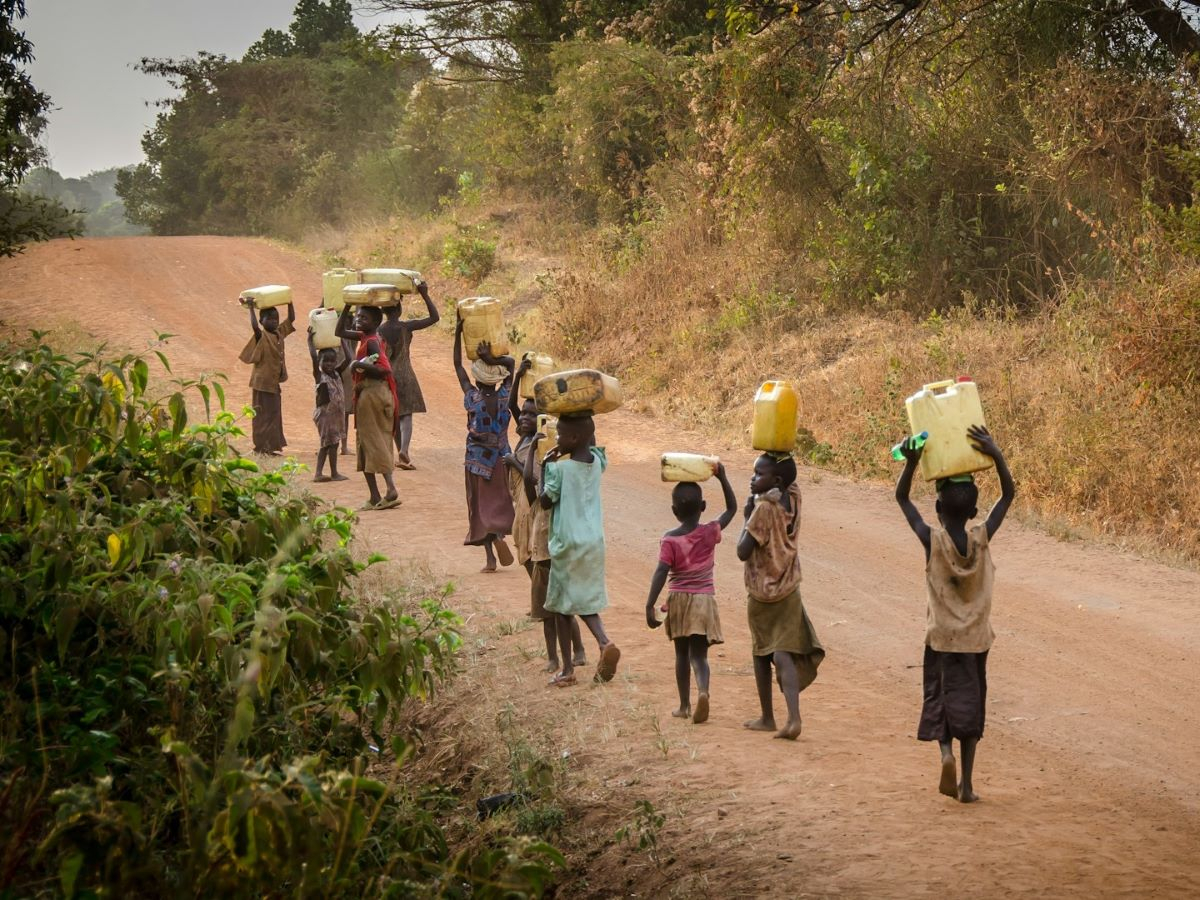According to the World Health Organization (WHO), in 2022, only 73 percent of the world's population had access to safe drinking water. Unfortunately, 3.5 billion people still lacked safely managed sanitation services, and 2 billion people were prevented from washing their hands with soap and water at home, a simple act that proves to be crucial in preventing disease. Despite significant progress in recent decades, however, access to basic services such as clean water and sanitation should not be taken for granted. Climate change, conflict and emerging pollutants (such as PFAS, microplastics and antibiotics) are a new addition to the “historical” list of difficulties humanity has had to consider so far.
During World Water Week in Stockholm, Renewable Matter spoke with Bruce Gordon, head of the Water, Sanitation and Health (WASH) unit of the World Health Organization and vice-chair of UN-Water, an interagency body designed to coordinate the efforts of UN entities and international organizations working on water and sanitation issues.
Gordon, let's start with one of the themes that will accompany your work from now into the coming decades. What are the main challenges in implementing climate-resilient WASH services?
First of all, at a global level, the concept of climate-resilient services is widely discussed, yet there is no universally accepted definition for what "climate resilient" actually means. Additionally, there are no specific indicators that assess progress in a way that clearly shows how many WASH services are truly climate-resilient. Once you start delving deeper into the issue, it quickly becomes complex. One key area is governance: are there policies in place that allow for climate resilience? Are there intersecting policies and procedures? Financing also plays a major role. When people think about climate-resilient services, many immediately focus on infrastructure and technology. For example, they may consider whether a pit latrine is elevated to prevent contamination during flooding. But the reality is more complicated. Some studies do not fully confirm that these technologies are always as effective as claimed. On top of that, resilience goes beyond climate − it also encompasses emergencies, making the issue even more multifaceted. It’s hard to say, “Everyone should implement technology A, B, or C.”
For example?
Consider wastewater treatment plants, for instance. People might argue that, in 20 years, these facilities could be underwater due to rising sea levels, and therefore we should relocate them. However, that is extremely costly. When it comes to service delivery, what is truly needed is a localized risk assessment. In a city experiencing water scarcity, for example, the response would involve building more water storage facilities or developing alternative water sources. Reuse is another key strategy, and it is crucial to have alternative plans when things go wrong. That is what resilience is about: withstanding shocks.
Let’s talk about emerging pollutants such as antibiotics, microplastics, PFAS. An increasingly hot topic.
There is a significant amount of public concern and emotion surrounding micro-pollutants. However, I believe there is also some confusion about the actual risk involved, largely because the public does not fully understand or appreciate the concept of exposure. For instance, you might have a contaminant in your water supply at levels as low as parts per trillion or nanograms per litre. The issue is that modern analytical detection methods are so advanced that we can now identify extremely small traces of these substances. This leads people to a binary way of thinking: “Is it in my water or not? I do not want to drink it if it’s there.” This is where the World Health Organization (WHO) comes in with its guideline values. The WHO has evaluated the health risks of hundreds of parameters and set safe levels.
On that note, we know that the main global concerns are contaminants such as arsenic and lead. For example, in Bangladesh, an estimated fifty million people are at risk of arsenic exposure through consumption of water from contaminated wells. What are the main difficulties of intervention?
The reason I mentioned [localized, editor’s note] risk assessments is because, in the end, choices must be made with limited resources. Investing in sanitation or water typically yields a return of five or six dollars for every dollar spent. However, in the real world, it’s nearly impossible for local decision-makers to apply such metrics due to factors like local politics. If you are trying to install services, such as a sewer system in a less developed area, it might be relatively affordable. But in densely populated areas, the cost becomes almost insurmountable. Removing contaminants like arsenic is challenging. Since it is naturally occurring, the issue isn’t simply whether to stop a manufacturing process. When making decisions, factors like microbial contamination, less common in groundwater but prevalent in surface water that needs treatment, need to be considered. Surface water may have less arsenic, but it requires different interventions. In some areas, hand pumps are painted a specific colour to indicate the presence of arsenic, so people avoid them. And of course there are technologies to treat water for arsenic available to us, but people can also be exposed through food, such as rice boiled in contaminated water. Because exposure accumulates over time.
A difficult balance to maintain if dangerous levels are to be avoided, but also to ensure that health is not compromised by limiting access to safe water...
These are difficult choices. Finding a safe water source that doesn’t cause harm is crucial. The situation with boreholes, for example, has been characterized as a disaster due to arsenic contamination, but those boreholes also saved lives by reducing microbial contamination, which was responsible for diseases like cholera.
Speaking of cholera and risk of outbreak in scenarios of limited access to water. Due to Israeli military operations on August 26, the UN had to interrupt humanitarian aid to Gaza for more than 24h. What are the consequences of conflicts such as this on WASH?
Water is fundamentally an enabler of cooperation and peace. However, areas with the worst water access are often conflict zones. One of the World Health Organization’s major concerns is the resurgence of cholera, which is appearing in countries that have not seen outbreaks in decades. Malawi and Ethiopia, for instance, have experienced high levels of cholera. The Global Task Force on Cholera Control (GTFCC) provides updated maps on this, showing the typical hotspots in South Asia, Africa, and Haiti in Latin America. In countries affected by conflict, it becomes much harder to provide essential water and sanitation services because functioning systems, governance, regulators, and oversight are required. For example, tariffs need to be collected, and proper organization is necessary to ensure these services reach the population.
Governance is so important that, recently, even within the UN the first System-wide Strategy on Water and Sanitation was launched. What is it all about?
The United Nations has launched a landmark initiative involving 36 U.N. agencies working on various aspects of water and sanitation. While this could potentially lead to fragmentation and redundant efforts, there are also significant positives. For instance, the WHO emphasizes inter-sectoral collaboration, particularly between the water and health sectors. Within the health sector, many experts work on highly specialized areas such as antimicrobial resistance (AMR), infection control in hospitals, or malaria. Taking AMR as an example, some countries produce active pharmaceutical ingredients and release wastewater containing pharmaceutical residues into rivers at concentrations equivalent to those used in human therapeutic doses. This high level of contamination can promote the spread of AMR. As WHO, we just launched new guidance to encourage the reduction of these concentrations. Additionally, there will be a high-level political declaration on AMR at the U.N. General Assembly. It's crucial to include water and sanitation in healthcare facilities to prevent infections, as well as in communities, while properly managing wastewater. National action plans on AMR must include the environment and water sectors to help stop the spread of resistant organisms. The same logic applies to many vertical disease programs.
During the revision Urban Waste Water Treatment Directive (UWWTD) for the first time the principle of extended producer responsibility (EPR) emerged in European water policies. Are you working on this as well?
Ultimately, the work we are involved in is essentially about providing guidelines for how waste and wastewater should be treated and managed to ensure they do not cause harm. We set the standards, but since we are not “the world’s police”, it is up to individual regulators or manufacturers to adhere to these guidelines. Ideally, industry stakeholders, including major pharmaceutical companies, will follow WHO guidelines, allowing them to demonstrate compliance and reassuring consumers and purchasers that their supply chain does not contribute to harm.
Among other things, you deal with an often-underestimated topic, female menstrual hygiene. What can you tell us about it?
Raising awareness about menstrual health and hygiene is critical. For the first time during the SDG period, this issue is being addressed through the joint monitoring program, which releases data on awareness and the availability of menstrual hygiene products in healthcare facilities and schools. This data is instrumental in driving political change and identifying areas for improvement. However, cultural stigmas and challenges persist. It is vital for women and girls to be actively involved in local decision-making on water and sanitation. Their visibility and participation ensure that their issues are recognized and addressed effectively. We are monitoring this involvement to guarantee that women would have meaningful representation in these decision-making processes.
Going back to micro contaminants, solving the problem at the source is more effective and less expensive than treatment. For microplastics, what are the most effective strategies: reducing the use of plastics or developing specific treatment methods, considering that, for example, treating other emerging contaminants such as PFAS has proven particularly costly?
Microplastics are particularly interesting as there is a lot of misinformation about them. Although microplastics should not be in water, we need more data to understand the risks they pose. It is not appropriate to claim with certainty that there is no risk. Different types of plastics require further research on exposure pathways, including ingestion and respiration. The precautionary principle suggests lowering exposure even if all data is not yet available. However, measures to reduce exposure must also be cost-effective. Given the plastic crisis, reducing plastic use both as consumers and producers is essential. While this reduction will help mitigate water contamination, we still need to determine how much removal is necessary and establish specific standards. As said, I am extremely concerned that the visibility of micro pollutants and emerging contaminants may distract from significant health issues. Every year, 1.4 million people die due to a lack of access to water and sanitation, primarily from diarrheal diseases, pneumonia, and respiratory infections. While chemical contaminants and their health impacts are important, we need to address all these issues comprehensively.
This article is also available in Italian / Questo articolo è disponibile anche in italiano
Cover image: Jeff Ackley, Unsplash



